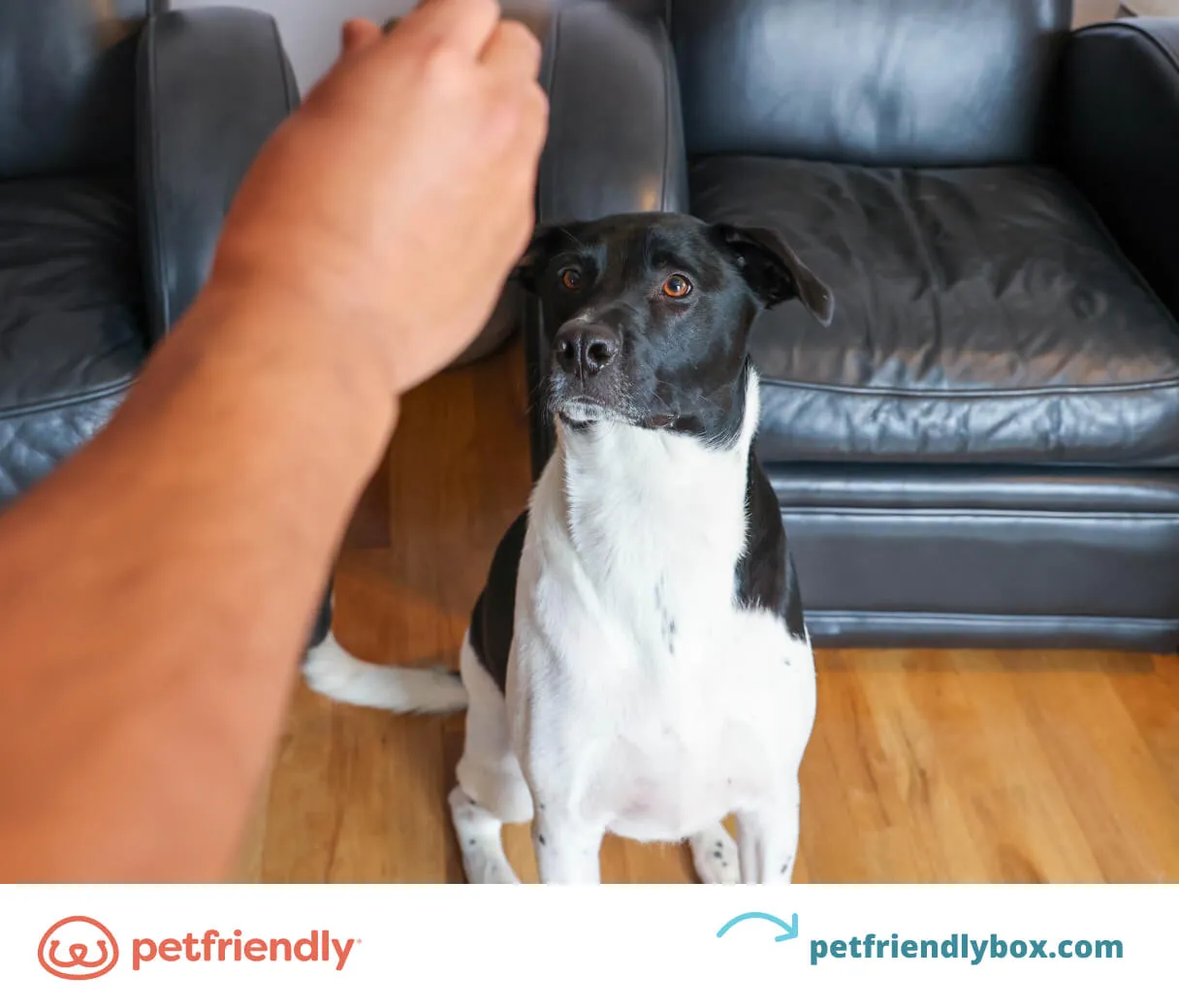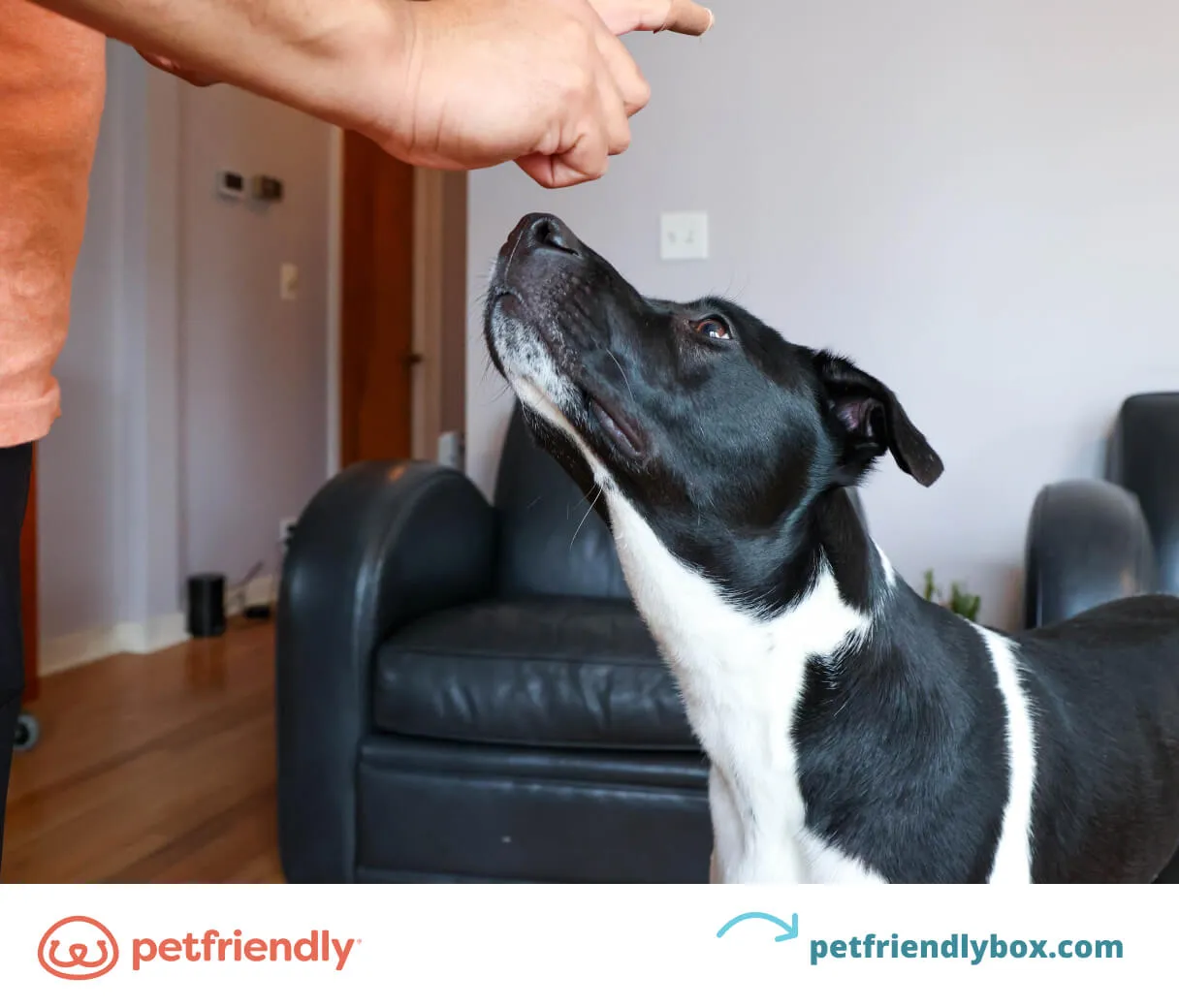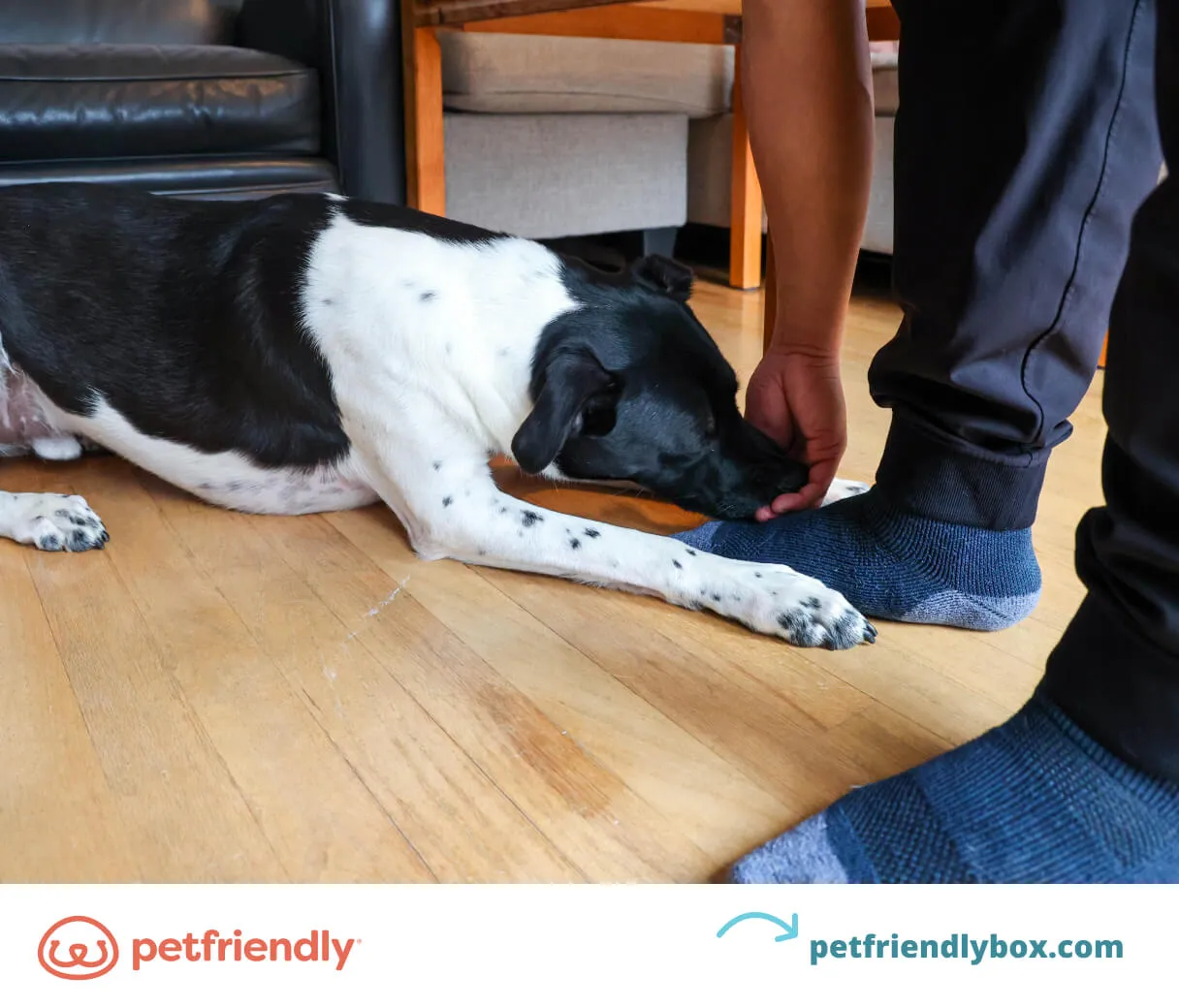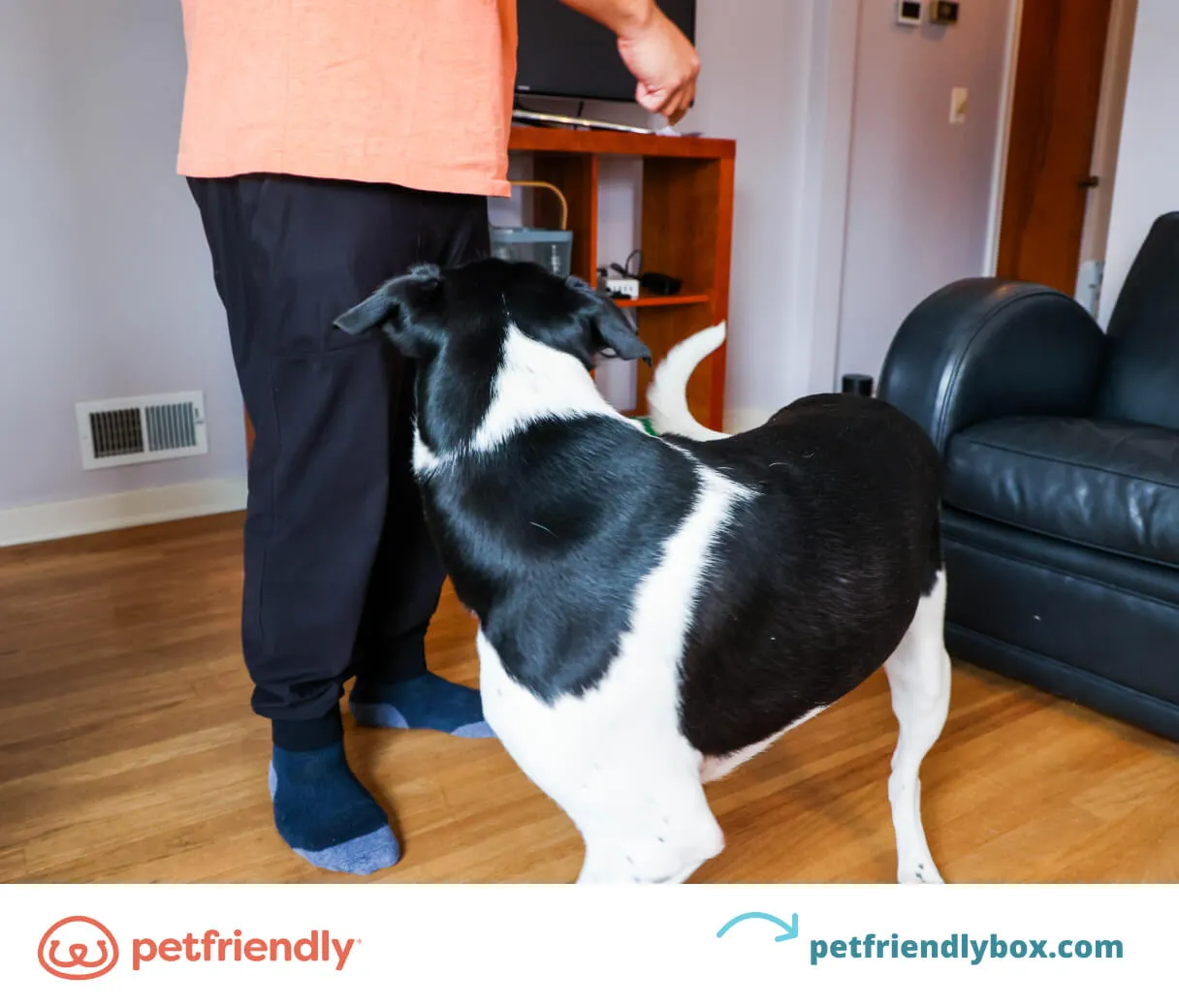Teaching your dog new tricks is a rewarding part of being a responsible pet parent. Beyond the sheer fun, tricks play a crucial role in helping your dog develop impulse control and stay mentally and physically stimulated. Dog training is fundamental for your canine companion to develop essential skills, improve their behavior, and expand their knowledge. When a dog reliably understands and performs a command, their behavior around other dogs and people significantly improves.
Embarking on the journey of teaching your dog new skills can be incredibly fulfilling. For those new to the world of canine education, focusing on straightforward tricks is the ideal starting point. These foundational commands not only build your dog’s confidence but also lay the groundwork for more complex behaviors. Mastering these easy dog tricks for beginners, step by step, will strengthen your bond and enhance your dog’s overall well-being.
easy cool tricks to teach your dog
1. Sit
The “sit” command is universally recognized as one of the easiest and most fundamental tricks for any dog owner to teach. It serves as the starting point for countless other dog behaviors and commands. Once your dog has mastered “sit,” they will find it significantly easier to learn a variety of other tricks. A charming variation of this trick is “sit pretty,” which is sure to impress your friends and family.
How to Teach Your Dog to Sit
To teach your dog to sit, you’ll employ a technique called luring. Hold a high-value dog treat close to your dog’s nose while they are standing. Slowly move the treat upwards and slightly back over their head, towards their rear. As their nose follows the treat, their body will naturally move into a sitting position.
The moment your dog sits, say the command “sit,” immediately reward them with the treat, and offer verbal praise like “yes!” or “good dog!” Repeat this process consistently until your dog reliably sits upon hearing the verbal command.
 Dog Trick: Sit
Dog Trick: Sit
2. Stay
Teaching your dog to “stay” is another foundational trick that offers significant benefits. This command is invaluable for keeping your dog close by, preventing them from approaching something potentially harmful, or simply managing their excitement around new people or animals. The “stay” command is particularly effective in developing your dog’s impulse control, a skill that will benefit them throughout their lives.
How to Teach Your Dog to Stay
Begin by having your dog in a “sit” position. Once they are seated, reward them with a treat and encouragement. Then, clearly say the verbal cue “stay.” Wait for a few seconds. If your dog remains seated and doesn’t move, say their designated release word and reward them again.
Gradually increase the duration of the “stay” before offering the reward. As your dog becomes more comfortable, start incorporating the command and then walk a short distance away from them. With consistent practice and increasing challenges, you can eventually have your dog stay put even with distractions or while you leave the room.
Release Words
Using a release word is a common practice among expert dog trainers. It clearly signals to your dog that they are finished with the command and free to move. Popular release words include “Okay,” “Release,” “Go,” “Break,” or “Free.” Choose a word that is easy for you to remember and distinctly different from other commands. Practice the “stay” command thoroughly until your dog understands it, then introduce the release word to signal the end of the exercise.
 Dog Tricks: Stay
Dog Tricks: Stay
3. Come
The “come” or “here” command is a critical trick for any dog owner. It’s not only about retrieving your dog when they wander off but also about their safety. If your dog is in a potentially dangerous situation, such as encountering an aggressive animal or moving towards a hazard, the “come” command can be a lifesaver. This is one of those easy dog tricks that provides peace of mind, allowing your dog more freedom to explore while ensuring they return to you when called.
How to Teach Your Dog to Come When Called
Start by creating some distance between yourself and your dog, just a few yards apart. Then, say your dog’s name followed by the command “come” or “here.” As your dog begins to move towards you, offer enthusiastic praise and encouragement like “good dog!”
When your dog reaches you, reward them with a treat and plenty of affection. Use your release word, wait a moment, and then repeat the process. This positive reinforcement helps your dog associate coming to you with pleasant experiences.
 Dog Tricks: Come
Dog Tricks: Come
4. Leave It
The “leave it” command is a vital safety command that trains your dog to ignore items on the ground that they should not touch. This can be particularly important if you accidentally drop something potentially harmful, like medication or toxic food. Teaching your dog to “leave it” ensures they will look to you for approval before ingesting anything they find on the floor.
How to Teach Your Dog to Leave It
To begin, place a high-value treat in your closed fist and present it to your dog. Say the verbal cue “leave it.” Allow your dog to investigate your hand, but do not let them have the treat. When your dog stops trying to get the treat from your hand, praise them and say your release word. Then, give them the treat.
Repeat this step until your dog consistently refrains from trying to get the treat for a few seconds. Once successful, try the same command with the treat in your open palm. The next step is to drop a treat on the floor and give the “leave it” command. After a short pause, use your release word to allow them to have the treat. With continued practice, your dog will learn to ignore tempting items until you give them permission.
 Dog Tricks: Leave It
Dog Tricks: Leave It
5. Down
The “down” command is incredibly useful in everyday situations. Whether you need your dog to remain still during a vet visit, settle down when guests arrive, or simply relax, “down” is an essential trick.
How to Teach Your Dog to Down
Start with your dog in a standing position. Ask them to “sit.” Once they are seated, hold a high-value treat between your fingers so your dog can see it. Slowly move your hand with the treat down towards the floor in a straight line. Your dog’s nose should follow the treat. As your hand reaches the floor, slowly drag it towards you, away from your pet.
Your dog should naturally lie down to reach the treat. The moment they are in a lying position, say the command “down” and reward them with the treat. Offer praise and use your release word to signal the end of the trick. With repetition, your dog will learn to lie down on the verbal command.
 Dog Tricks: Down
Dog Tricks: Down
6. Place
The “place” command is a valuable trick for teaching your dog to settle down and relax in a designated spot. This is incredibly helpful when you need your dog to be out of the way, such as during meal preparation or when guests are visiting. Teaching your dog to go to their “place” can also help curb problem behaviors like begging at the table or jumping on people.
How to Teach Your Dog to Place
Before teaching “place,” ensure your dog has a good grasp of “sit,” “down,” and “stay.” You’ll also need a clear release word. Introduce your dog to their designated “place,” whether it’s a bed, mat, or crate. Reward any interaction your dog has with it, like sniffing or stepping onto it. You can also lure them onto their place with a treat.
The moment your dog steps onto their designated spot, say the verbal command “place” and reward them. After a few moments, use your release word. Gradually increase the duration your dog stays on their place. Once they are comfortable, start adding the “stay” command while they are on their place and move away from them. Introduce distractions like shaking a leash or opening a door to further challenge them. Reward your dog for remaining on their place through these distractions before releasing them.
 Dog Tricks: Place
Dog Tricks: Place
7. Back Up
“Back up” is a fun movement trick that helps dogs learn to use their bodies effectively and safely. Walking backward isn’t natural for most dogs, so it’s a skill that needs to be taught. This trick can be useful when navigating tight spaces or encouraging your dog to give guests a bit more personal space.
How to Teach Your Dog to Back Up
Ensure you are in an open space with room to move, such as a hallway or an outdoor area. With your dog standing in front of you, take a step towards them. The moment your dog takes a step backward with their hind legs, reward them with a treat.
After a few repetitions, incorporate the verbal command “back” or “back up.” With consistent practice, your dog should begin to walk backward automatically upon hearing the command.
 Dog Tricks: Back Up
Dog Tricks: Back Up
8. Shake Paws
Teaching your dog to “shake paws” is a delightful and easily learned touch trick. Simple tricks like this are excellent for social situations and for impressing friends and family.
How to Teach Your Dog to Shake Hands (Paws)
Start with your dog in a sitting position. Hold a small treat in your closed hand, keeping it just out of reach in front of your dog. Repeat the phrase “shake” while gently tapping one of your dog’s front paws with your other hand. Many dogs will instinctively lift their other paw in an attempt to reach the treat.
When your dog lifts their paw, gently take it in your hand. Say your command word (“shake”) and reward them with the treat. This helps your dog associate the command with the action. Repeat these steps until your dog automatically lifts their paw when you give the command.
 Paw Shake Hands Dog Trick
Paw Shake Hands Dog Trick
9. Play Dead (or Rollover)
While not as essential as basic commands, teaching your dog to “play dead” is a fun and entertaining trick. If your dog already knows the “down” command, they should pick this up relatively quickly.
How to Teach Your Dog to Play Dead
Begin by having your dog lie down using the “down” command. Hold a treat close to your dog’s nose and slowly move it sideways, encouraging your dog to roll onto their side to follow the treat. Reward your dog with the treat when they are lying on their side. Repeat this several times.
Once your dog is comfortable lying on their side, introduce a verbal command like “play dead” or “bang.” You can also incorporate a hand signal, such as pointing a finger like a gun. After your dog associates the command with the behavior, reward them with a treat.
 Dog Trick: Play Dead
Dog Trick: Play Dead
10. Speak
Barking is a natural form of communication for dogs. However, teaching your dog when it’s appropriate to “speak” can help with impulse control and manage excessive barking.
How to Teach Your Dog to Speak
Hold something your dog really wants, like a favorite toy or treat, in front of them. Your dog might try to perform other tricks to get it, or they might make a sound out of excitement or frustration. The moment your dog makes any vocalization, mark the behavior with the command “speak” and immediately reward them. Repeat this process until your dog understands that “speak” means to make a noise on command.
 Dog Trick: Speak
Dog Trick: Speak
11. Take a Bow
The “bow” command comes naturally to some dogs, especially those who often stretch. Instead of just acknowledging their stretch, use the command “bow” or “take a bow” to reinforce this trick.
How to Teach Your Dog to Take a Bow
With your dog standing in front of you, hold a treat near their nose. Slowly lower the treat towards the floor. Their nose should follow the treat all the way down. As you lower the treat, say the command “bow” or “take a bow.” When your dog’s front legs are lowered and their hindquarters remain standing, reward them with the treat. Repeat this until your dog performs this trick on command.
 Take a Bow Dog Trick
Take a Bow Dog Trick
12. Spin
“Spin” is a fun trick that adds to your dog’s repertoire. While not essential, it’s an enjoyable trick to teach your dog and can be a great confidence booster.
How to Teach Your Dog to Spin
Hold a treat close to your dog’s nose. Slowly move the treat towards the side of their head, encouraging your dog to turn their head to follow it. While moving the treat, say the command “spin.” Continue moving the treat in a complete circle until your dog spins all the way around.
Once you return to your starting position, reward your dog with the treat. Repeat these steps until your dog can complete a full circle with only the verbal command.
 Dog Trick: Spin
Dog Trick: Spin
Final Tips for Teaching Your Dog Tricks
Now that you have learned some of the easiest tricks for beginners, here are a few essential tips to guide you along the way:
- Keep training sessions short: Aim for short, focused sessions to maintain your dog’s engagement.
- Start with basic commands: Master foundational tricks before moving on to more complex ones.
- Consistency is key: Training sessions lasting 15 to 20 minutes, once or twice a day, can be very effective.
- Use treats wisely: Utilize small pieces of your dog’s regular food or healthy supplements as training rewards.
- Time training around meals: Plan your training sessions strategically to avoid overfeeding your pet.
Behavior and trick training are fantastic ways to stimulate your dog’s mind and strengthen your bond. Remember that not all dogs learn at the same pace. Be patient, be consistent, and most importantly, have fun with your training!
